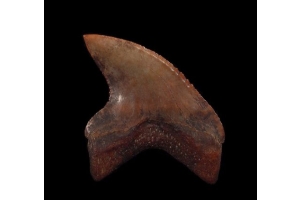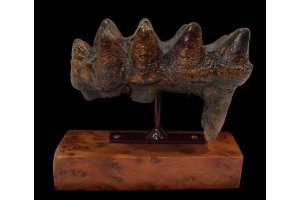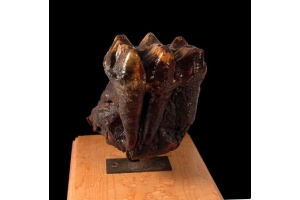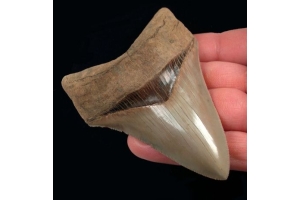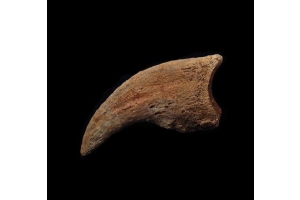
In the vast expanse of the ocean, two apex predators reigned supreme: the ancient leviathan Megalodon and the modern terror of the seas, the Great White Shark. At megalodon tooth vs great white tooth the forefront of their arsenal lay their formidable teeth, finely honed by evolution for the art of predation. Let's embark on a journey to compare and contrast the Megalodon tooth with that of the Great White Shark, exploring their anatomy, adaptations, and significance in the world of marine predators.
Anatomy and Size:
The Megalodon tooth, a relic of prehistoric times, is a marvel of nature's engineering. With lengths often exceeding six inches and serrated edges designed for maximum cutting efficiency, these teeth were built to withstand the immense forces generated during predatory strikes. Composed of dense enamel and supported by robust roots, Megalodon teeth are renowned for their sheer size and structural strength, reflecting the colossal proportions of their ancient owner.
In contrast, the Great White Shark's tooth, while smaller in comparison, is no less formidable. Ranging from two to less than three inches in length, these triangular, razor-sharp teeth are perfectly suited for gripping and tearing into the flesh of prey. Although smaller than Megalodon teeth, the teeth of the Great White Shark are capable of inflicting devastating wounds, making them highly effective tools for hunting and feeding.
Adaptations for Predation:
The differences in tooth size and morphology between Megalodon and Great White Shark teeth are indicative of their distinct hunting strategies and ecological roles. As a massive apex predator of its time, Megalodon relied on its massive teeth and powerful bite force to incapacitate and consume large prey, including whales and other marine mammals. Its robust dentition and formidable size allowed it to dominate the ancient oceans as an apex predator.
On the other hand, the Great White Shark employs a more agile and stealthy approach to hunting. With its keen senses and lightning-fast strikes, it is able to ambush and incapacitate its prey with precision. While lacking the sheer size and power of Megalodon, the Great White Shark compensates with speed, agility, and a relentless pursuit of its quarry.
Scientific Insights:
The study of Megalodon and Great White Shark teeth offers valuable insights into the ecology, behavior, and evolution of these iconic predators. By analyzing the morphology, wear patterns, and isotopic composition of their teeth, scientists can reconstruct their dietary preferences, feeding habits, and interactions with other species. Furthermore, comparisons between Megalodon and Great White Shark teeth provide insights into the evolutionary adaptations that have shaped their predatory strategies over millions of years.
Conclusion:
In the epic saga of oceanic predators, the teeth of Megalodon and the Great White Shark stand as enduring symbols of power, efficiency, and adaptability. While separated by millions of years of evolution, these apex predators share a common legacy as masters of the sea. As we continue to explore their ancient world and unravel the mysteries of their existence, their teeth remain as timeless testaments to the awe-inspiring wonders of nature's design.
If you are interested in purchasing authentic shark teeth, Buried Treasure Fossils offers you a collection of fossils and teeth, including Megalodon and Great White Shark teeth. Explore our collection today!






